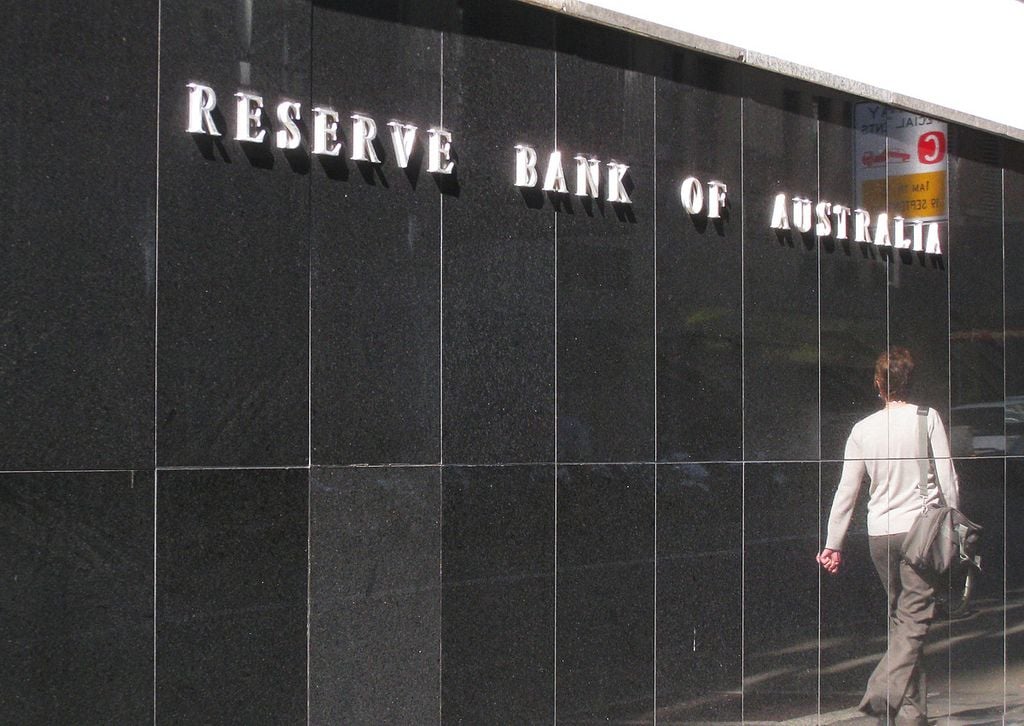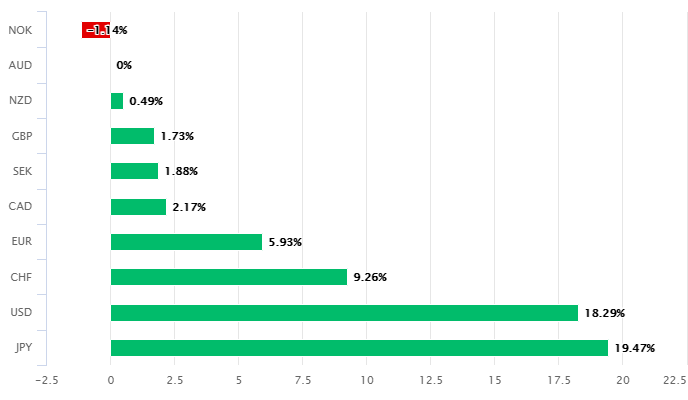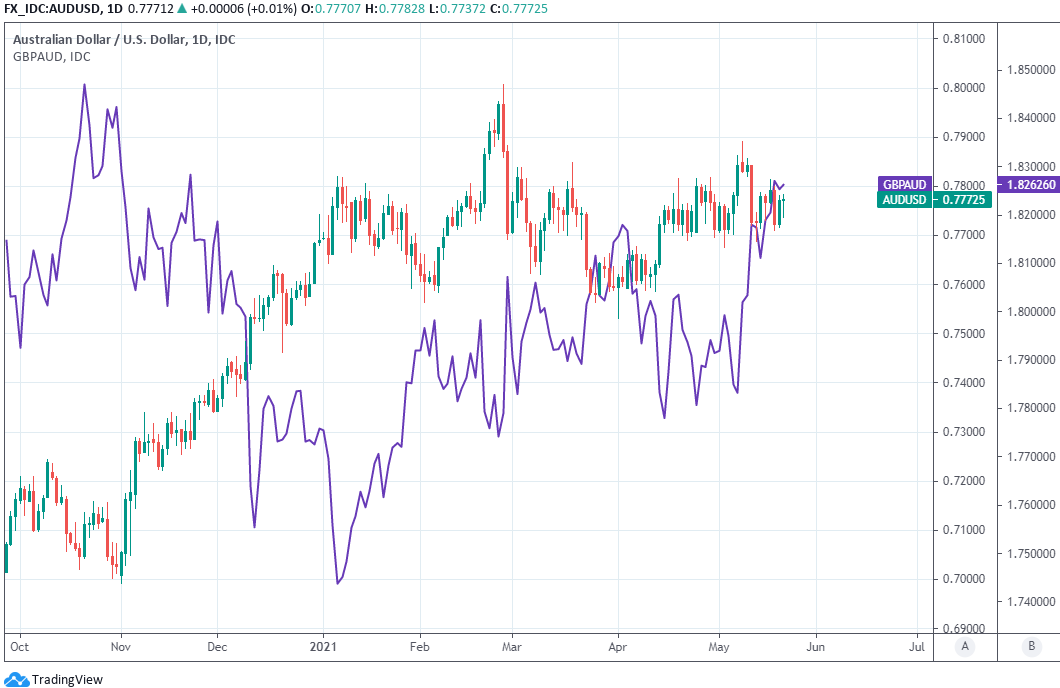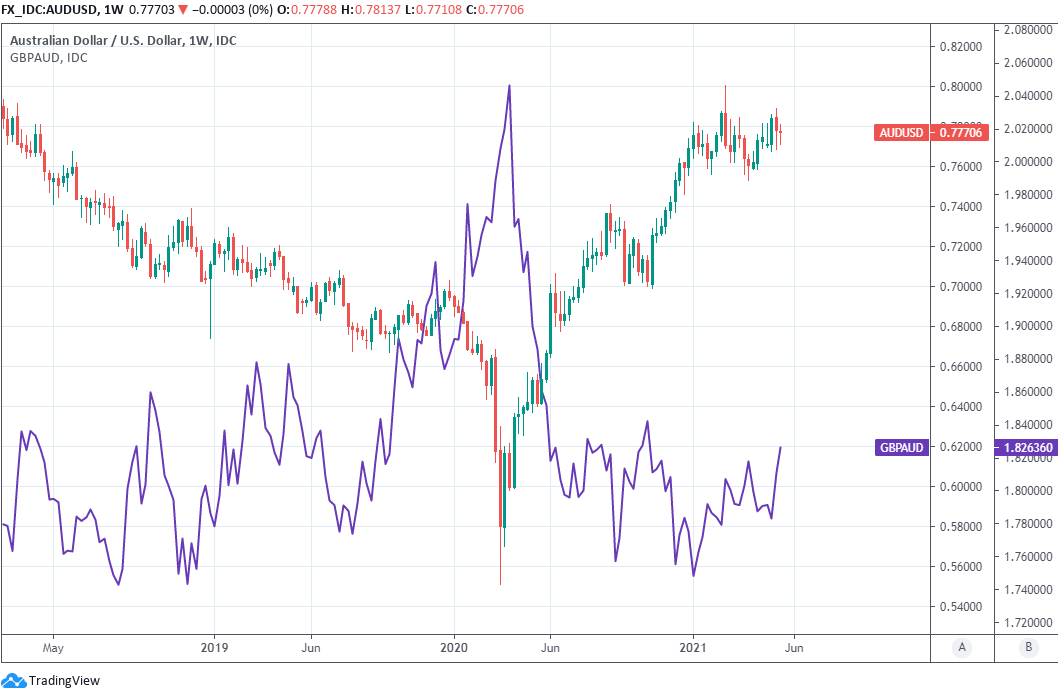Australian Dollar's RBA Hamstring Could See It Hold Below 0.79 All Year
- Written by: James Skinner
- AUD underperforms major & commodity FX
- After overlooking March retail sales surprise
- Flagging spirit could see it struggle all year
- Rabobank forecasts AUD/USD under 0.79

Image © Newtown Grafitti, Reproduced under CC Licensing.
- GBP/AUD reference rates at publication:
- Spot: 1.8287
- Bank transfer rates (indicative guide): 1.7646-1.7774
- Money transfer specialist rates (indicative): 1.7803-1.8185
- More information on securing specialist rates, here
- Set up an exchange rate alert, here
The Australian Dollar was a straggler ahead of the weekend but could continue to frustrate the bullish side of the market for a while yet, according to forecasts from Rabobank, which suggest Reserve Bank of Australia (RBA) policy could prevent AUD/USD from getting back above even its February high of 0.79 all year.
Australia’s Dollar lagged comparable commodity currencies like the New Zealand and Canadian Dollars by a country mile on Friday while also underperforming Pound Sterling and the poorly Japanese Yen, leaving it with gains over only the Euro and a handful of other European currencies.
“Iron ore prices drifted down overnight as China’s steel margins continued to retreat on lower steel prices. Nonetheless, AUD/USD is significantly undervalued relative to the level implied by iron ore prices,” says Elias Haddad, a strategist at Commonwealth Bank of Australia.
This was after the Aussie overlooked a March retail sales report that came in far stronger than was anticipated during the overnight hours, in what was a repeat of the indifferent response given to a stronger-than-anticipated April employment report in the previous session.
Australian retail sales rose by 1.1%, building on February’s 1.3% increase and when economists had looked for only a 0.5% uplift.
Above: AUD/USD shown at daily intervals alongside GBP/AUD.
Secure a retail exchange rate that is between 3-5% stronger than offered by leading banks, learn more.
Previously, the unemployment rate posted a surprise decline from an upwardly-revised 5.7% to 5.5% for the month of April in the prior session.
“We continue to expect AUD/USD to languish around current levels in the weeks ahead and don’t forecast a sustained move above 0.79 before the end of the year,” says Jane Foley, a senior FX strategist at Rabobank.
Australia’s Dollar was still an outperformer for the 12 calendar months to Friday having risen against all nine of its most frequently traded counterparts other than the Norwegian Krone, although this statistic obscures a developing trend toward underperformance.
The Australian Dollar was down for the week on Friday against all nine nearest rivals other than the New Zealand Dollar and Norwegian Krone, echoing the underperformance of other commodity currencies during the period.
{wbamp-hide start} {wbamp-hide end}{wbamp-show start}{wbamp-show end}
It was also the second worst performing major currency for the month to Friday, which also saw other commodity currencies underperform with the exception of the Canadian Dollar, which has been lifted by factors related to Bank of Canada (BoC) monetary policy.
“Although AUD/USD tracked higher in the hours after the labour report, this was in line with the broad-based softening in the USD. Following last week’s move higher, AUD/USD is again languishing below the 078 level,” Foley says.
The Aussie outperformed alongside other commodity currencies last year when investors looked past the destruction caused by the pandemic and began to price-in a new business cycle and the beginning of a subsequent global economic recovery.

Above: Australian Dollar performance against G10 currencies in 12 months to Friday.
The more recent and general pecking order of performance among major currencies suggests commodities are now falling from favour with investors however, while the Canadian Dollar’s pole position for 2021 is indicative of attention that may now be beginning to fixate on relative central bank policies.
This is potentially bad news for the Australian Dollar because when it comes to the question of which central bank could raise interest rates first, or who might be likely to pack away their crisis-fighting toolbox first, the RBA is unlikely to be first out of the blocks.
“Australia has a poor history when it comes to wage inflation. This helps explain the dovishness of the RBA in the face of a relatively upbeat assessment of the domestic economy,” Rabobank’s Foley says.
The RBA was already well into an interest rate cutting cycle before the coronavirus came along following years in which inflation had remained below its 2%-to-3% target band, which the bank and other observers have long attributed to a lack of wage inflation.
But with unemployment higher now than it was before the pandemic and expected to remain so for a while yet, the RBA could be set to keep its cash rate at its new record low of 0.10% for some time yet and potentially even continue forcing down the yields on Australian government bonds through its quantitative easing programme
The RBA itself has indicated that it could be years yet before any of these policies change, which is one of the reasons why the Aussie might continue to underperform this year, especially if other central banks continue to contemplate aloud the likely appropriate timing for ending or otherwise reversing their own crisis-period policies.
Above: AUD/USD shown at weekly intervals alongside GBP/AUD.






